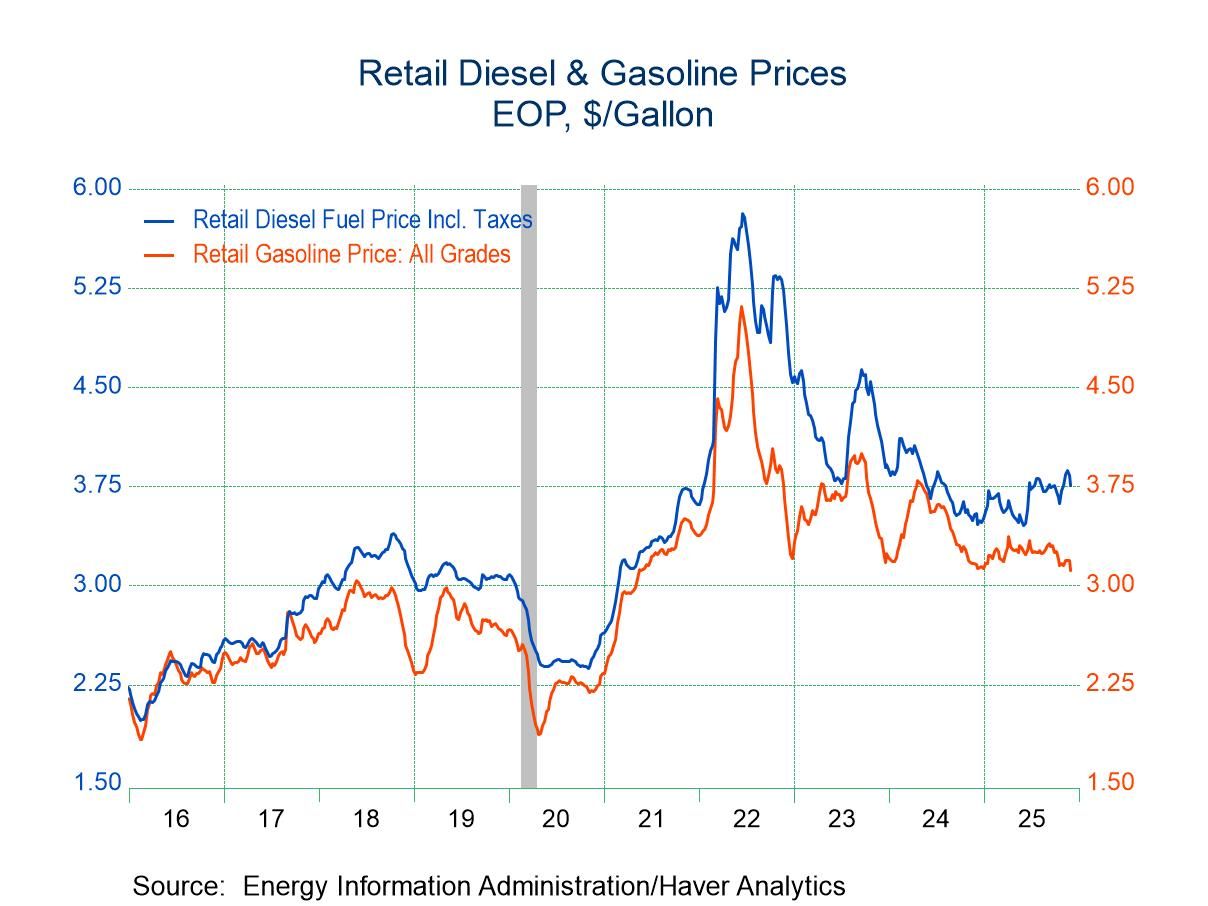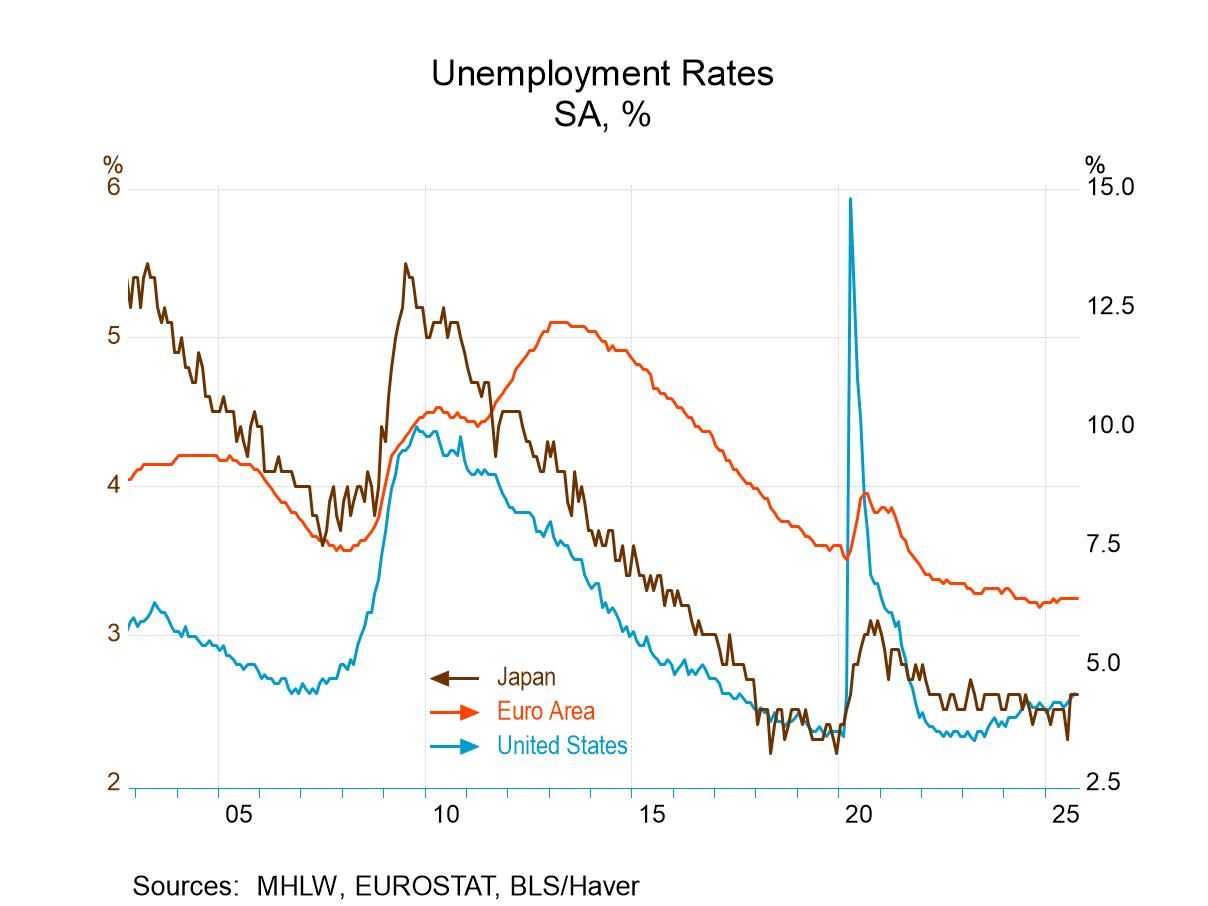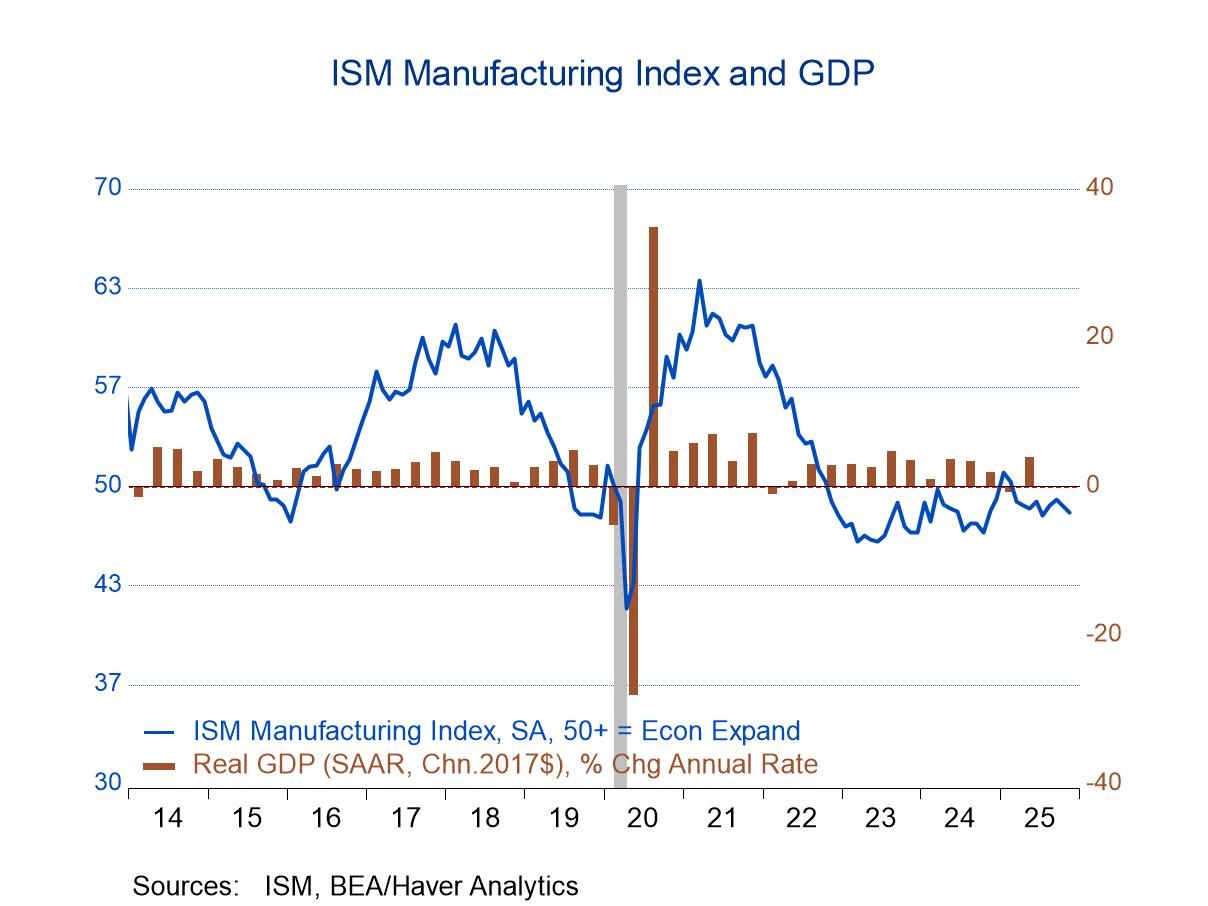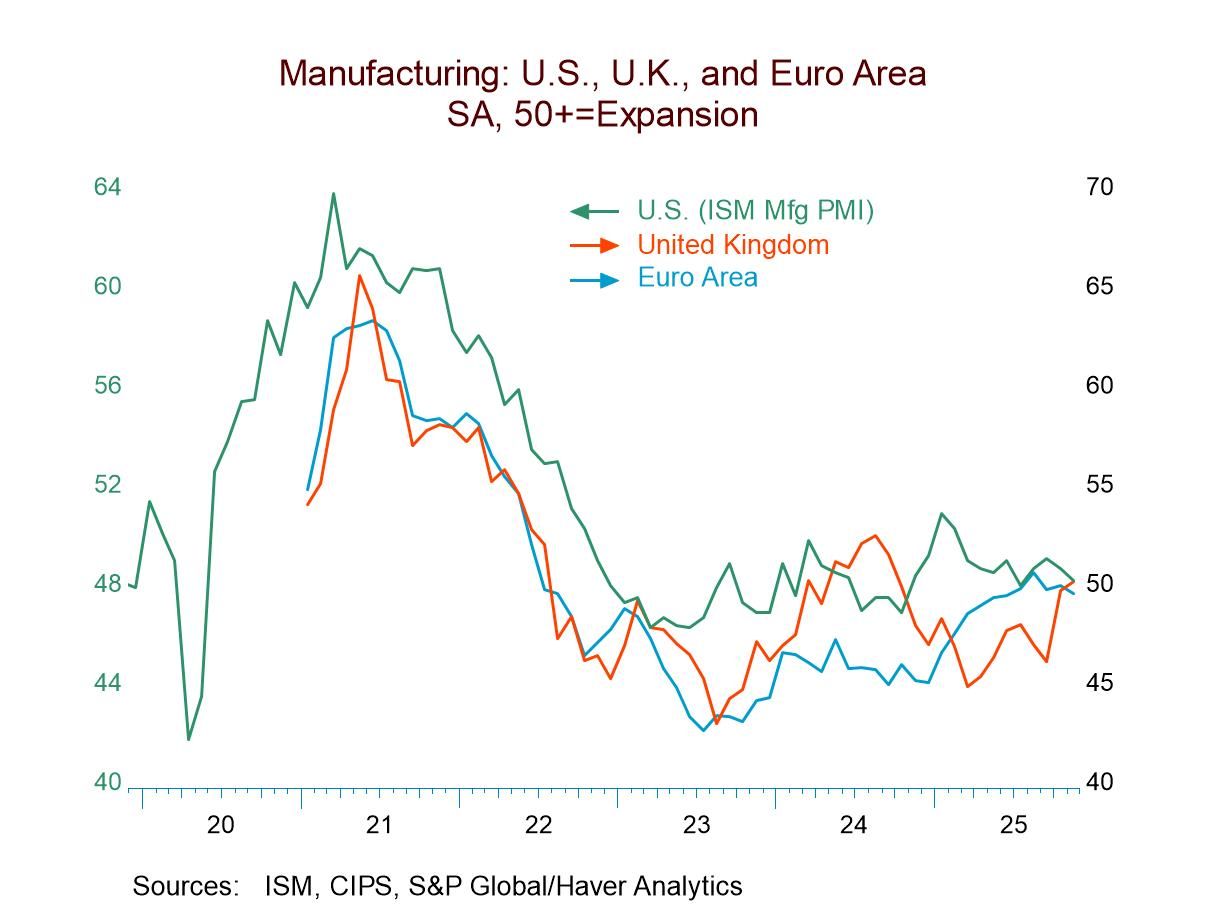 Global| Jul 02 2025
Global| Jul 02 2025Charts of the Week: Headwinds and Heatwaves
by:Andrew Cates
|in:Economy in Brief
Summary
Financial markets have remained generally buoyant in recent days, with global equity indices advancing on the back of relatively upbeat global growth data, benign European inflation readings and the prospect of further policy easing from major central banks. At the same time, the US dollar has continued to weaken, reflecting a run of disappointing US economic data and rising investor concerns about the fiscal outlook, even as European growth surprises have turned more positive. This divergence, combined with the prospect of lower US policy rates relative to some (though not all) peers, has added to the dollar’s drift lower (charts 1 and 2). Supply chain strains—highlighted by elevated vessel queues at US West Coast ports—also feed into the narrative that US tariff measures may be contributing to sticky input costs and stagflation risks (charts 3 and 4). Meanwhile, record temperatures in parts of Europe this week have reinforced the climate challenge facing policymakers, with the final two charts illustrating how rising global temperatures and heat stress could increasingly weigh on productivity and growth potential if left unchecked. With trading volumes light ahead of the July 4th holiday and markets awaiting tomorrow’s US non-farm payrolls report, the interplay between softer US data, resilient equities, a weaker dollar, and climate-related risks remains firmly in focus.
The Blue Chip interest rate consensus The latest Blue Chip Financial Forecasts survey suggests that monetary policy across most major advanced economies is expected to loosen modestly over the next six months. Central banks in the US, Canada, UK, Australia, and the euro area are all forecast to cut rates to varying degrees, with Australia expected to deliver the largest reduction. In contrast, Japan continues to stand out as the only major economy where forecasters see scope for a slight increase in rates, highlighting its unique position in the global policy cycle. Overall, the chart reflects a broad but uneven tilt towards monetary easing as policymakers respond to softer inflation and growth signals.
Chart 1: Blue Chip Financial Forecasts Survey: 6 month ahead expected change in policy rates

The US dollar and data surprises This next chart shows that the recent bout of US dollar weakness has coincided with a period in which US economic data surprises have turned more negative relative to the euro area. The surprise index differential between the US and euro area —measuring US growth surprises minus euro surprises—has declined, pointing to a run of weaker-than-expected US data and stronger euro area outturns. Historically, this has tended to pull the euro higher relative to the dollar. However, the scale of the dollar’s recent slide appears larger than the data surprises alone would imply, suggesting that other forces are potentially weighing on the currency as well.
Chart 2: The euro versus Citigroup’s US and euro area growth surprise index

US stagflation risk Latest ISM manufacturing survey data highlight a worrying decoupling between input costs and underlying demand that points to potential stagflation pressures in the US economy. Historically, the ISM New Orders Index and the Prices Paid Index have tended to move broadly in sync, reflecting cycles where stronger demand drives both production and cost pressures higher. However, the chart shows that while prices paid have recently rebounded sharply, new orders have remained subdued and stuck near contractionary territory. This breakdown suggests that firms are facing rising input costs without a corresponding pickup in demand—an imbalance that could be amplified by US tariff measures, which tend to push up costs for imported materials and components while weighing on new orders through weaker trade flows.
Chart 3: US Manufacturing ISM Survey: New orders versus Prices Paid

US Supply Chain Risks Added to this, the number of vessels queuing at the Los Angeles and Long Beach harbours has climbed to elevated levels in recent weeks, highlighting supply chain bottlenecks on the US West Coast. While various factors may be driving this congestion—including seasonal trade patterns and shifts in global shipping routes—recent tariff measures could be contributing as well. New or increased tariffs sometimes distort normal trade flows by prompting importers to front-load shipments ahead of cost increases or reroute sourcing strategies in ways that strain particular ports.
Chart 4: Numbers of vehicles queueing at the Los Angeles/Long Beach Harbour port

Global warming Pivoting to more structural issues, the next chart highlights the persistent upward trend in global surface temperature anomalies over the past century, with both land and ocean temperatures now averaging well over one degree Celsius. This long-term warming signal continues to manifest in extreme weather events and record-breaking heat waves, including the unusually high temperatures that have swept parts of Europe in recent days, pushing June readings to historic highs in several regions.
Chart 5: Global surface temperature anomalies

Climate change and productivity This final chart illustrates the projected impact of heat stress on labour productivity in Europe under current climate policy scenarios, highlighting how rising temperatures could steadily erode worker efficiency over the coming decades. As shown, the median estimates from the Climate Analytics group suggest that productivity losses could deepen from around 0.3 percentage points today to nearly 0.9 percentage points by mid-century if climate conditions remain unchanged. These figures reflect the physical limits of the human body’s capacity to perform work in increasingly hot and humid environments, a challenge that will become more acute if climate change continues on its current path. With recent record-high June temperatures across parts of Europe underscoring the reality of more frequent heat extremes, these projections serve as a clear reminder of the economic stakes involved in addressing climate risks and investing in adaptation measures to protect labour productivity and economic resilience.
Chart 6: Potential impact on European labour productivity of global warming

Andrew Cates
AuthorMore in Author Profile »Andy Cates joined Haver Analytics as a Senior Economist in 2020. Andy has more than 25 years of experience forecasting the global economic outlook and in assessing the implications for policy settings and financial markets. He has held various senior positions in London in a number of Investment Banks including as Head of Developed Markets Economics at Nomura and as Chief Eurozone Economist at RBS. These followed a spell of 21 years as Senior International Economist at UBS, 5 of which were spent in Singapore. Prior to his time in financial services Andy was a UK economist at HM Treasury in London holding positions in the domestic forecasting and macroeconomic modelling units. He has a BA in Economics from the University of York and an MSc in Economics and Econometrics from the University of Southampton.






